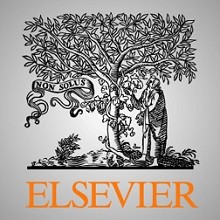
دستکاری از راه دور سلولهای بنیادی مزانشیمی در معرض نانوذرات نیمه هادی
Abstract
1- Introduction
2- Materials and methods
3- Results and discussion
4- Conclusion
References
Abstract
In this paper, we report on spatial redistribution of bone marrow mesenchymal stem cells loaded with magnetic nanoparticles under the influence of continuously applied magnetic field. Semiconductor nanoparticles were synthesized by epitaxial growth of a GaN thin layer on magnetic sacrificial core consisting of ZnFe2O4 nanoparticles. Different quantities of nanoparticles were incubated in vitro with mesenchymal stem cells. High density of nanoparticles (50 μg/ml) leads to a decrease in the number of cells during incubation, while the density of nanoparticles as low as 10 μg/ml is enough to drag cells in culture and rearrange them according to the spatial distribution of the magnetic field intensity.
Introduction
Stem cells are defined by their ability to self-renewal and differentiation into more specialized cells, depending on their level of potency [1]. Being easily harvested and cultured, Mesenchymal Stem Cells (MSC) are among the most used stem cells in regenerative medicine. MSC can differentiate into bone, cartilage, fat, tendon, and other different cell lines depending on the given conditions and growth factors [2]. MSC therapeutic potential is enormous and covers a wide medical area, from bone marrow transplantation in blood cancers [3] to the treatment of various diseases like osteoarthritis [4], Crohn`s disease [5], diabetes [6], cardiovascular diseases [7], otorhinolaryngologic pathologies [8], etc. There are several major issues in the therapeutic processes including the non-invasive cellular imaging in high quality transport of therapeutic agent, as well as the remote manipulation in the desired area. The success rate of the therapy based on stem cells depends on the accuracy the cells are delivered to the site of interest. Magnetic resonance imaging (MRI) represents an important tool in cells tracking [9]. The MRI usually includes gadolinium-based contrast agents. Over the last years, however, different types of paramagnetic nanoparticles have been used for tracking cells [10]. The advantage of using nanoparticles for cells tracking relies on the possibility of tuning with the material concentration and chemical composition. Besides tracking, nanoparticles offer the possibility to manipulate with cells and control their spatial position in vivo [11]. The superparamagnetic iron oxide (SPIO), usually stabilized by coating with dextran, gelatine, chitosan or other polymers, is among the most commonly used nanoparticles for cells tracking [12, 13]. Our previous investigations have shown that uncoated gallium nitride nanoparticles (GaN) do not affect the viability and proliferation of endothelial cells [14] and can be used for multifunctional therapeutic purposes which include cells tracking [15]. The use of piezoelectric nanoparticles in combination with magnetic ones could increase the impact of smart materials not only in remote cells imaging but also in the control of the cellular metabolic activity [16-19].
